The first land that came into sight after being at sea for nearly two weeks was Mount Pico, poking its 7700-foot head through a marine layer we soon would discover as typical morning weather in the Azores. There are nine volcanic islands in this Portuguese archipelago sitting in the Atlantic nearly 1000 miles from mainland Europe. Nearly 30% of the total land is protected national parkland making it a paradise for nature lovers.
Every town street is bordered with calçada portugeusa, small flat pieces of stone arranged by hand in different mosaic designs. When streets turn to country roads, stones are replaced by hydrangeas in dense hedges fed by as much as 40” of annual rainfall. A patchwork of basalt rock walls covers hillsides, dividing pastures where happy cows create a large industry of beef and dairy, but nowhere can you find refrigerated milk.
Large hauls of bacalhau cod and tuna are among the many fish that land in the local markets and are exported to the world. Food is fresh, healthy and inexpensive, and a simple carafe of the house wine is the restaurant norm. Locals are friendly and good-natured not just to tourists, but to one another. There’s always a festival underway somewhere on the islands celebrating saints or the sea or the saints of the sea. Our very first impression of the Azores, however, was rampant graffiti.
Like most cruisers making this oceanic journey, we made landfall on the island of Faial, anchoring in the busy port of Horta, where local fishing boats flank one side of the harbor and sailboats (tied together two or three deep) occupy the remaining real estate. Similar to a guestbook of who’s here and who’s been here, and who returns year after year, thousands of colorful hand-painted autographs dot the concrete sea wall and surrounding sidewalks.
Legend has it that sailors must leave their mark to guarantee a safe passage when they leave…so the graffiti is legal and encouraged. Each mariner paints a square—some a small doodle, others elaborate sea art—all a postcard of sorts capturing their voyage across the sea.
June is the most weather-friendly month for sailing to the Azores and consequently we found the vibe along the waterfront busy and jovial, each crew celebrating their arrival after several weeks at sea. We quickly located Peter’s Café Sport, the iconic meeting place for cruisers, where we enjoyed the local gin do mar cocktail and listened to tales of the sea in every language, most of the boats now hailing from Europe.
We happily embraced the Horta community, walking miles and miles over those stone tiles to schlep groceries and laundry, eat yummy steak picante at Atletico, and even cook our own fish over a hot lava stone at Canto da Doca. We tried barnacles and limpets, learned how to order um copo de vinho tinto, and how to request a sassy cabelo curto (a mere $15) at the local hair salon. Each afternoon, we watched a yellow bar truck park at the dock, where fishermen and mamas and teenage girls from the local rowing teams laughed and drank until the sun went down. Horta is also where we got Covid:(
There are few places to anchor in the deep waters surrounding the Azores, which forced us to see most of the sights by car. Rentals are expensive and hard to find so we settled into a routine of knocking out as many stops as possible in one very long day. We began our sightseeing on Faial by driving 3400 feet above the sea to the Caldeira do Faial, which majestically opens up nearly two miles across under a blanket of lush verdant landscape. In a blink of an eye, dense fog gobbled up the view and the huge crater disappeared.
We returned to sea level where the sun shone brightly over Varadouro but the water temperature was a chilly 65 degrees. Still, we made the first of many plunges into the ocean’s piscina natural, followed by a warm lunch of garlic prawns and Secrets of the Pig. Our route took us next to the top of a lighthouse where in 1957 the Capelinhos volcanic eruption spewed so much lava and ash for 13 months that it nearly buried the beacon and actually formed an additional mile of land. In stark contrast to the rich landscape of the Caldeira, Capelinhos is a barren moonscape, reminding us just how long it takes for vegetation to regenerate.
The main attraction on the island of Pico is well, Pico—the mountain. Each morning from our anchorage in Horta we woke to a different view of the peak—sometimes cast in an orange glow of a sunrise, other days completely obscured in clouds, or my favorite, just a small lenticular cloud cap at the very tip.
We gave Gémeaux the day off and climbed aboard a 30-minute inter-island ferry to do our exploring. Hikers from around the globe come to summit the highest mountain in Portugal and they are easy to spot on the ferry, eagerly assembling their hiking regalia on the outbound trip and snoring in the corner on the return. The Pico Nature Park runs an impressive operation limiting hikers to 120/day in an effort to preserve the mountain and issuing geo-tags to track everyone making the tricky scramble up and down the rocky trail. We opted for a short one-mile trek up the mountain to check the box and then spent the remainder of the day exercising our palettes.
We lucked into Magma, which would become one of our favorite restaurants offering a stunning view of the neighboring islands and introducing us to Pico white wines. 15th century vintners are credited with the unusual method of growing grapes along the ground (vs trellises) when they cleverly built rectangular plots to protect crops from wind and salty ocean air. Designated in 2004 as a UNESCO World Heritage region, this beautiful man-made countryside of perfectly- arranged stone walls is an amazing sight…and the wine is good too!
The last of the islands near Horta was my favorite—amazing cheese and a unique panorama of fajãs, land formed from lava flows or landslides that jut out below a coastal cliff like a small peninsula. More than 40 fãjas house São Jorge’s main population centers, leaving the center of the island to the cows and rows of hydrangea and cryptomeria japonica cedars. Unlike the busy port of Horta, the town of Velas offers a small anchorage with just a handful of boats in the shadow of a steep bluff. The only interruption of solitude was a cacophony of strangulated cries each night as hundreds of Cory Shearwater gulls returned from feeding grounds to their cliffside homes.
Volcanic rumblings two months earlier threatened our visit to São Jorge but seismic activity had quieted and the island was ours to explore. We were constantly in and out of the car—stopping at every miradouro, standing awestruck at the seaside fãja thousands of feet below with its collection of tiled red roofs, and deciding to either press on to the next viewpoint or to drive the windy narrow road for a closer look. The Fajã do Ouvidor was our favorite mountain descent, largely because it was home to our favorite piscina naturel. which was indeed created entirely by Mother Nature. Tall lava rocks plunged into the sea forming a deep natural pool, either a calm glassy blue or a foamy bubble bath, depending on the weather and ocean surf that day.
One week before my July 4th birthday, we anchored at the foot of Monte Brasil, a 16th-century fort in the city of Angra do Heroísmo, whose historic center is a UNESCO World Heritage Site. The circular island of Terceira draws visitors and locals from other islands every year for a two-week festival of parties and live music that last nearly ‘til dawn the next day. At midnight, a staccato of loud booms sent the cat flying and woke us from our slumber. For the next hour, we sat on the bow in our jammies and watched the grand finale of the festivities—an extraordinary fireworks show just a couple hundred feet in front of Gémeaux. Happy birthday to me!
Having eaten a lot of chips and cheese during our island tours, we worked harder to find good restaurants. This was particularly true when at lunchtime we found ourselves driving by Ti Choa, a local favorite on Terceira that friends had recommended. Do you have a reservation? the host asked when we peered in. Uh…no we answered with sad eyes. Do you eat meat…because you know that is all we serve? I haven’t eaten beef in years as we answered…Why of course!
And with that little white lie, we were ushered to the only available table in the back—a perfect front row seat for watching a busy kitchen. We ordered the tasting platter, which included their acclaimed alcatra meat stew, along with morcela blood sausage and a variety of other indistinguishable meats I thought I’d never eat. It was delicious and the entire experience was a delight. We rolled out of the restaurant and decided a 300-foot hike down a volcanic chimney at Algar do Carvão was the next mandatory stop to work off lunch. It was absolutely stunning.
Always in favor of quiet anchorages over marinas, we were surprised how much we enjoyed our stay alongside 400 boats at the Ponta Delgada marina on São Miguel. We had neighbors of every nationality but connected immediately with a French couple, retired boulangers and now owners of a newer version of Gémeaux.
The captains swapped mechanical stories and I got some fabulous breadmaking tips and a great language refresher. Known as the island verde, there’s a lot to cover on the largest island of the Azores. We splurged and rented a car for two days. Sete Sidades is the face of the Azores and the two lakes—one emerald green and the other turquoise blue—sitting inside a giant volcanic crater did not disappoint. It’s a little like the Grand Canyon—no matter how much you describe its sheer beauty, you can’t fully appreciate it until you’re standing on the rim.
We sipped tea at one of the only two plantations in Europe, ate corn on the cob cooked in a bubbling caldeira at Furmas, and of course made a major dent in the supply of pineapples grown on the island. Lest you think all we do is eat, we hiked down canyons and followed dirt roads in search of all the island’s cascatas that tumbled off ledges into beautiful pools of water.
The southernmost island of the Azores is also the oldest, founded in the 1430s. Santa Maria stands apart with a much warmer and arid climate and feels even more remote since inter-island ferry service was recently discontinued. For us, it was the last of the islands we would visit and the launching point for our final passage to mainland Europe. We worried about our ability to provision amidst rumors that we would find only small markets with limited inventory.
Imagine our delight when we discovered the large Continente supermarket chain was hosting their grand opening the day after we arrived—a definite highlight of our worldwide adventures. Long sandy beaches complement the warm weather and the popular Praia Formosa draws a number of European vacationers and even a few surfers. We missed the famed annual Blues Festival held a month earlier in Anjos, but sat in the church where Christopher Columbus was said to have worshipped with his crew.
 There’s your overview of the Azores—I’m sorry I couldn’t keep it under 2000 words:( Sadly, we didn’t make it to Flores, Corvo, or Graciosa in our six weeks but loved every minute of exploring the culture and raw beauty of the other six islands. Now go put the Azores on your bucket list so you can see firsthand how exquisite Sete Sidades is and find Gémeaux’s boat graffiti in Horta:)
There’s your overview of the Azores—I’m sorry I couldn’t keep it under 2000 words:( Sadly, we didn’t make it to Flores, Corvo, or Graciosa in our six weeks but loved every minute of exploring the culture and raw beauty of the other six islands. Now go put the Azores on your bucket list so you can see firsthand how exquisite Sete Sidades is and find Gémeaux’s boat graffiti in Horta:)












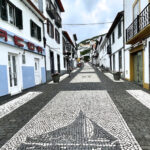






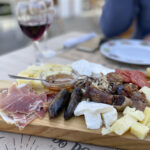
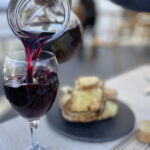







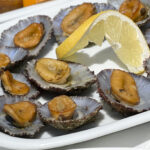



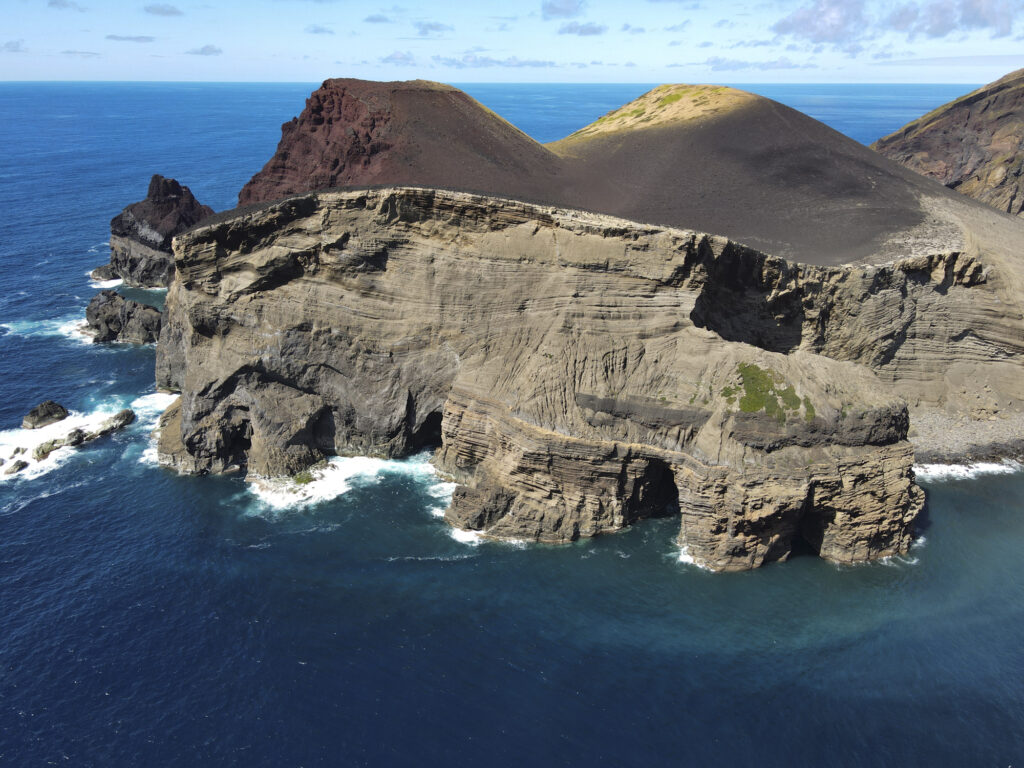





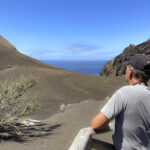





















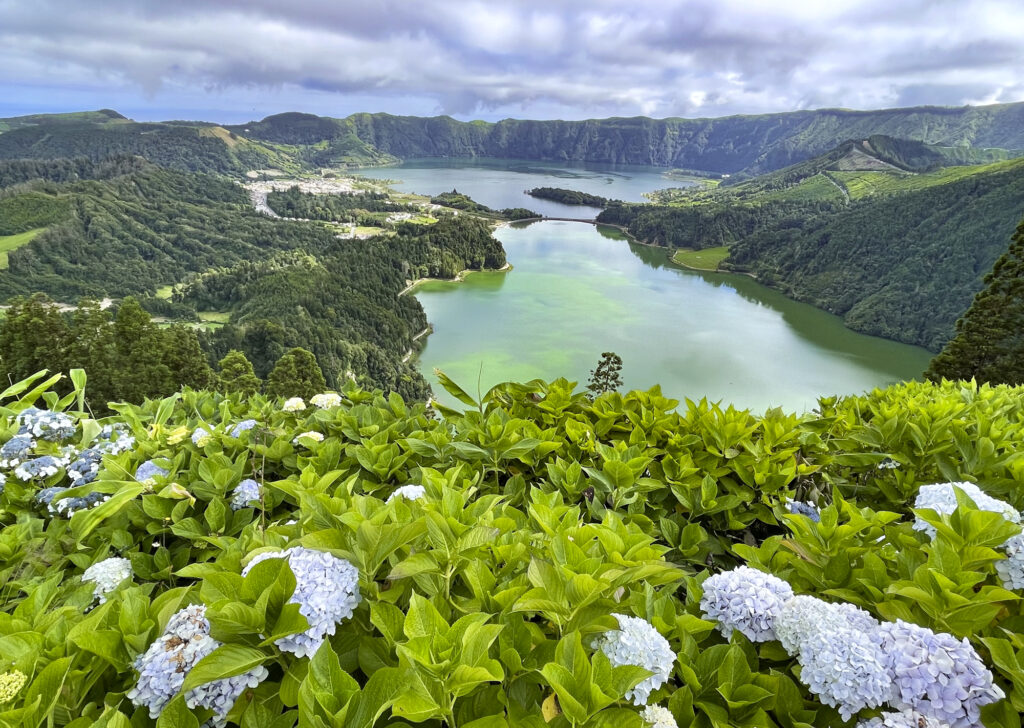





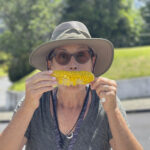



















Shirea, I love, love, love, reading about your adventures, it’s almost as if I’m there with you.
Thank you, Carolyn
What an amazing adventure and tale! Thanks for sharing!
Awesome adventures you are having! Thanks for your blog!
Delightful! Thanks so much. Now we are dreaming of the Azores. Can’t wait for your next post. Sweet sailing to you. Caroline and Joe
Amazing photos, as usual. You sure lead a dull and boring life. Love reading about all your adventures — keep them coming. And be safe out there! LOVE!